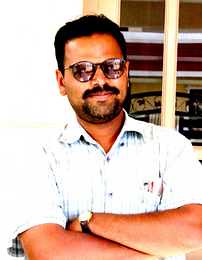Wireless energy transfer turns on bulb at MIT, eliminating batteries next?
By R. Colin Johnson| Courtesy of EE Times (06/11/2007 4:54 PM EDT) | |
| | |
| MIT assistant professor Marin Soljacic, inventor of the technique, described it at the American Institute of Physics' Industrial Physics Forum last fall. His MIT team now has demonstrated the concept by remotely powering a 60-watt bulb from a distance of six feet. The key to the technique is its use of nonradiative magnetic coupling. "Two same-frequency resonant objects will tend to couple with each other strongly, while only interacting weakly with off-resonant environmental objects," said Soljacic. "That's the physics principle enabling nonradiative wireless energy transfer." Today magnetic coupling is used over short distances to recharge batteries such as in electric toothbrushes, but it requires that the device under charge be located very near the induction coils, since the energy of the magnetic field falls off very quickly with distance. In conventional magnetic induction, the distance can only be increased by increasing the power of the magnetic field. WiTricity, on the other hand, uses matched resonant antennas that enable the magnetic coupling to take place over distances of several feet, without boosting the power of the magnetic field. Other groups have demonstrated radio-frequency wireless power transfers over longer distances, but only for micro- to milliwatts. The demonstration setup consisted of matched copper coils about three feet in diameter, with the transmitting coil attached to a power source operating in the meghahertz range. The receiving coil resonated within the nonradiative magnetic field, oscillating at the same frequency, thereby efficiently using magnetic induction to illuminate the bulb. The resonant antennas remain coupled even when objects are placed between them, as Soljacic showed during the light bulb demonstration by positioning his entire design team between the sending and receiving antennas. The light bulb continued to be illuminated despite the obstacles. Without the resonance enabled by the matched antennas, the team claims, 1 million times more energy would have to be pumped into the transmitting coil to enable conventional, nonresonant magnetic induction. Next the team wants to demonstrate powering a laptop computer wirelessly, by designing computer room antennas that would match an antenna coil to be built into the base of the laptop. The team not only believes it will be able to supply enough power to keep the laptop's batteries recharged but predicts it will be able to eliminate the battery altogether by directly supplying power to the laptop. Funding the research were the Army Research Office, MIT's Institute for Soldier Nanotechnologies (ISN), the National Science Foundation and the Department of Energy. Soljacic's team members were professors Peter Fisher and John Joannopoulos (who is ISN's director) and students Andre Kurs, Aristeidis Karalis and Robert Moffatt. | |
Story









0 Comments:
Post a Comment
<< Home